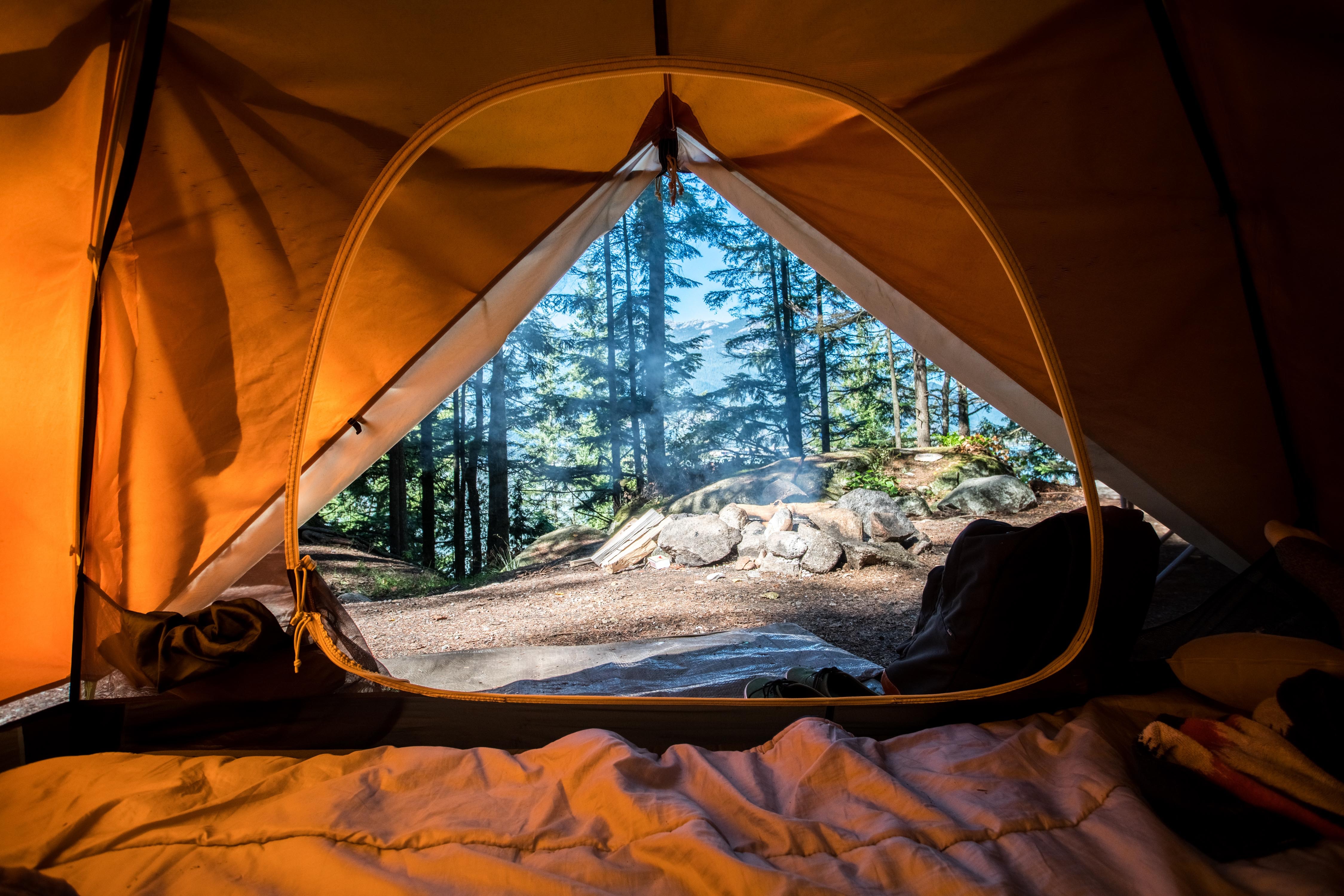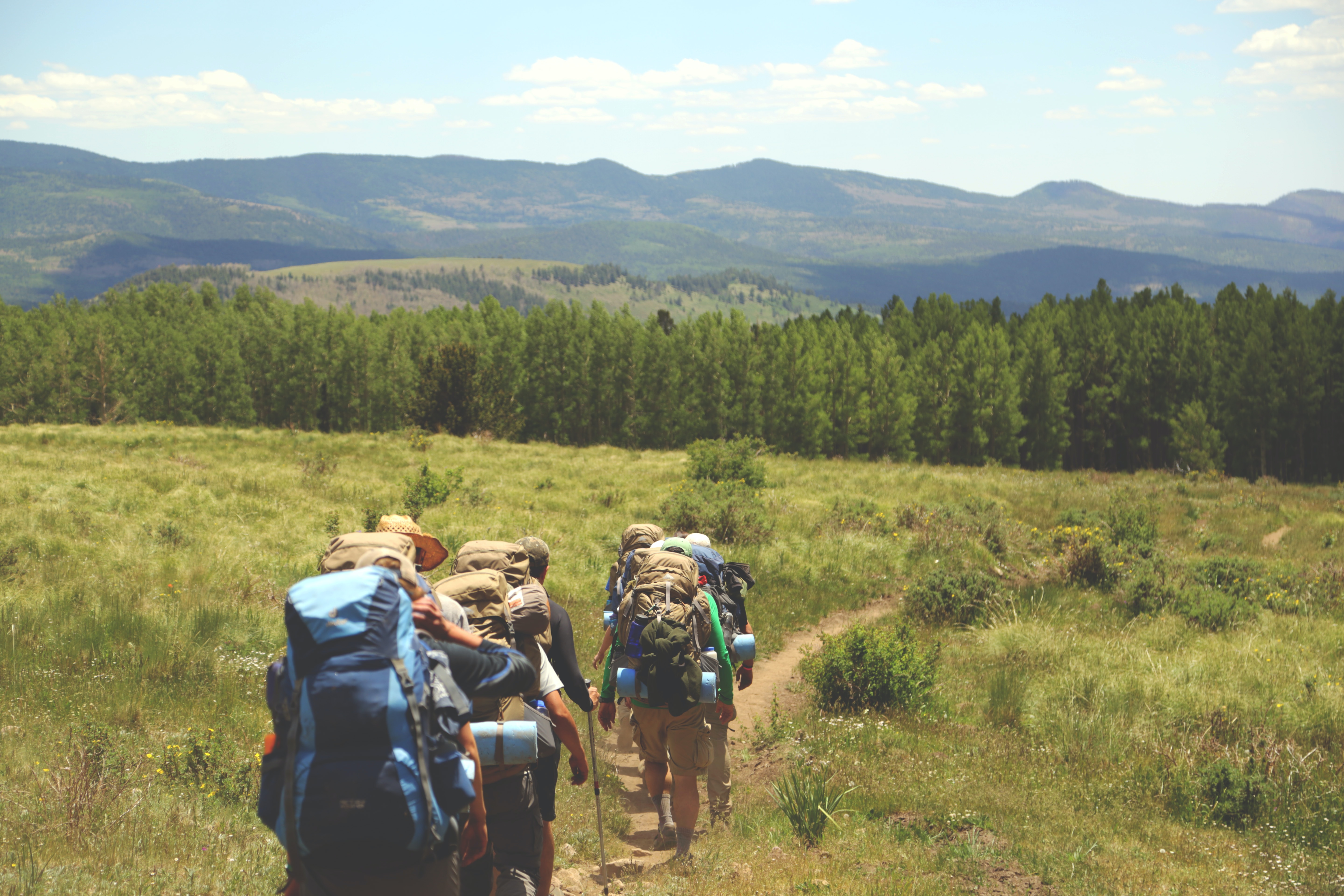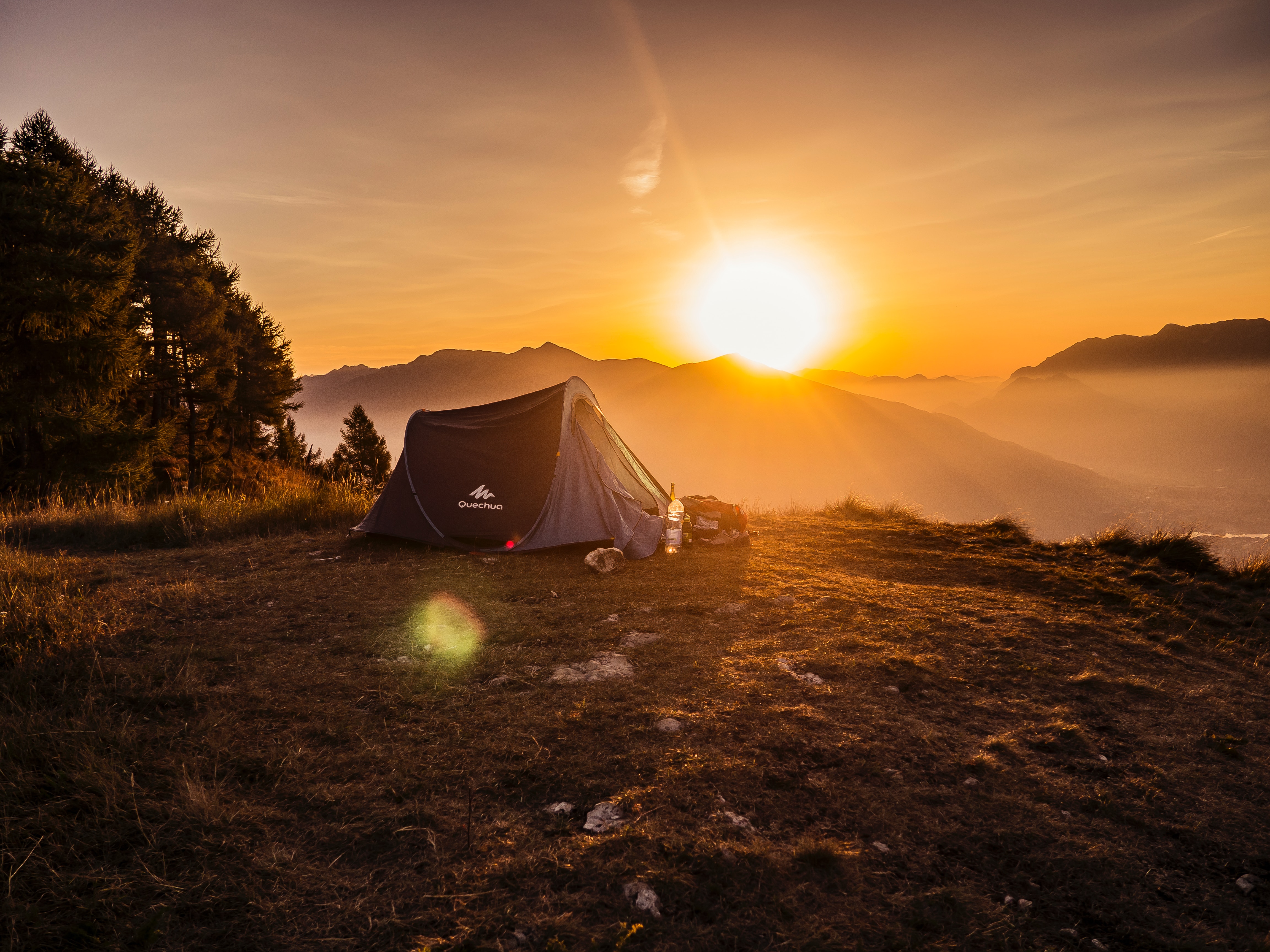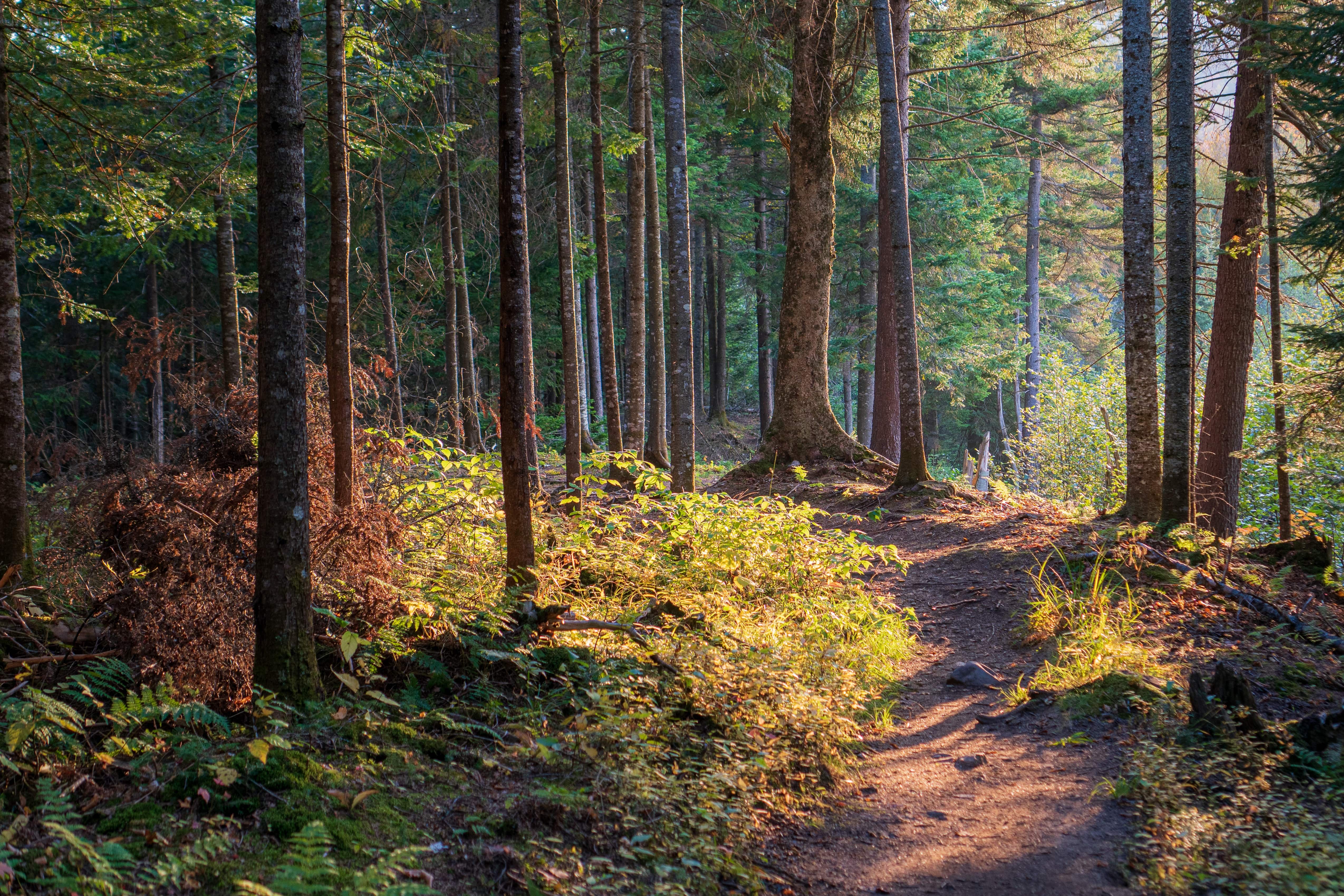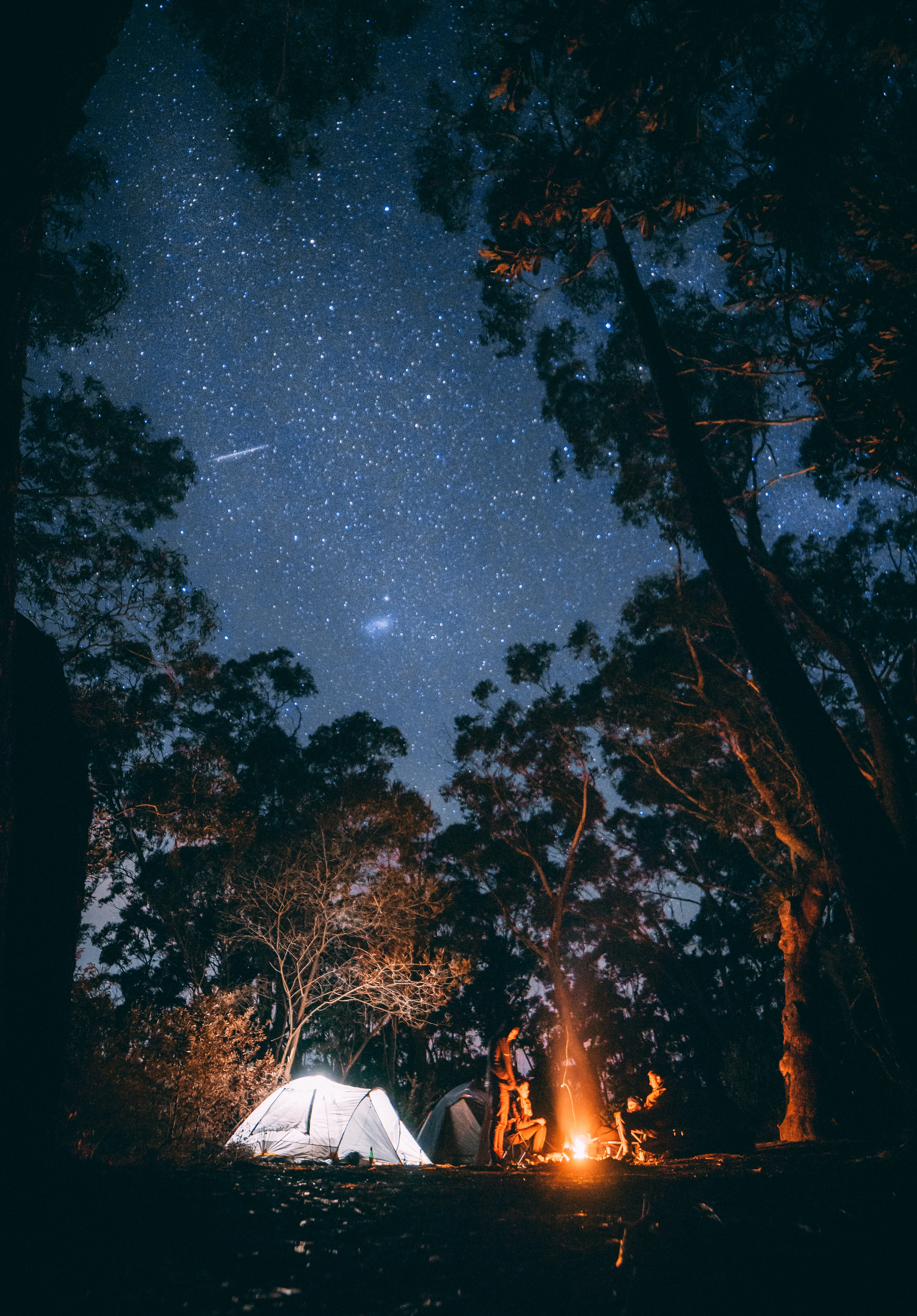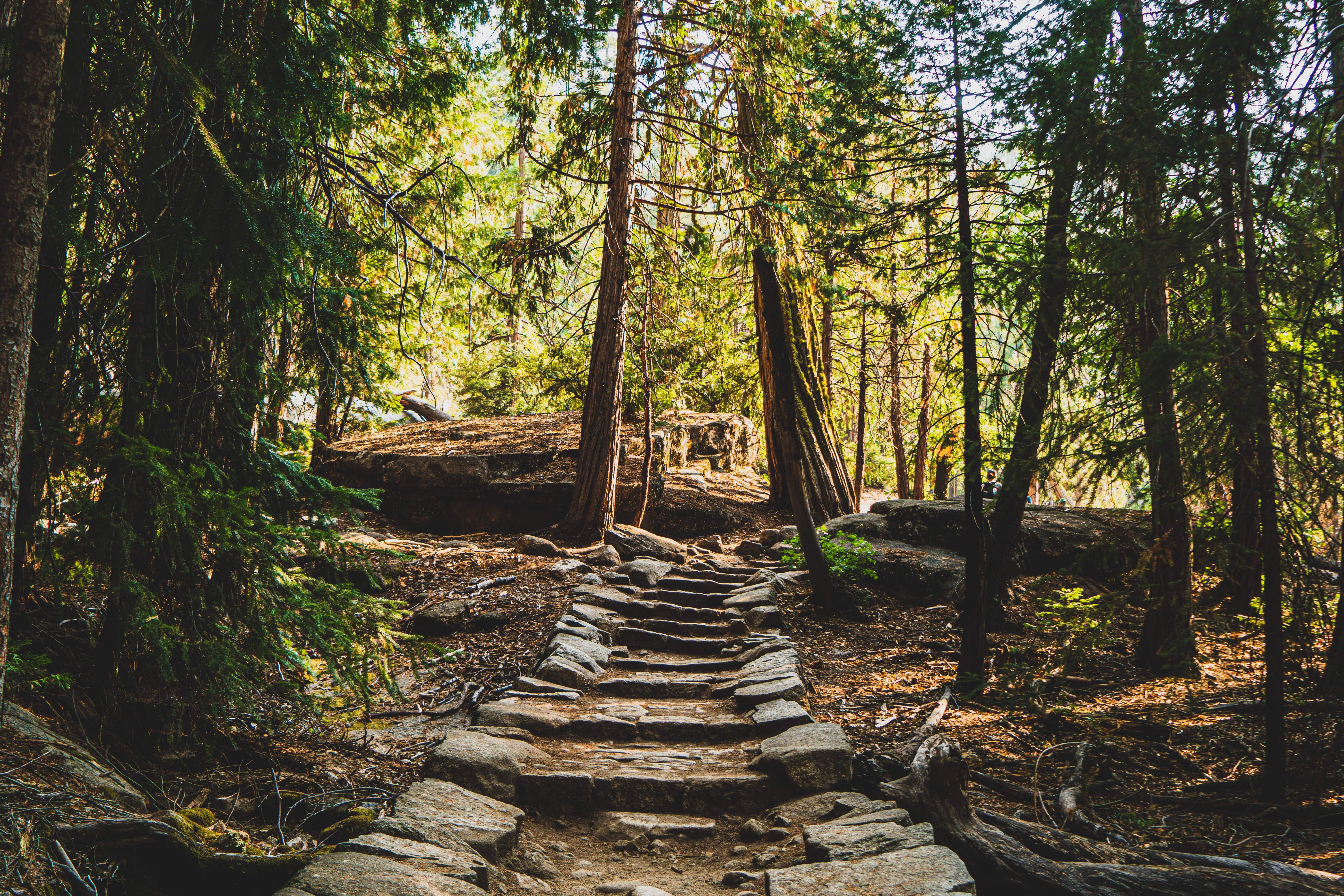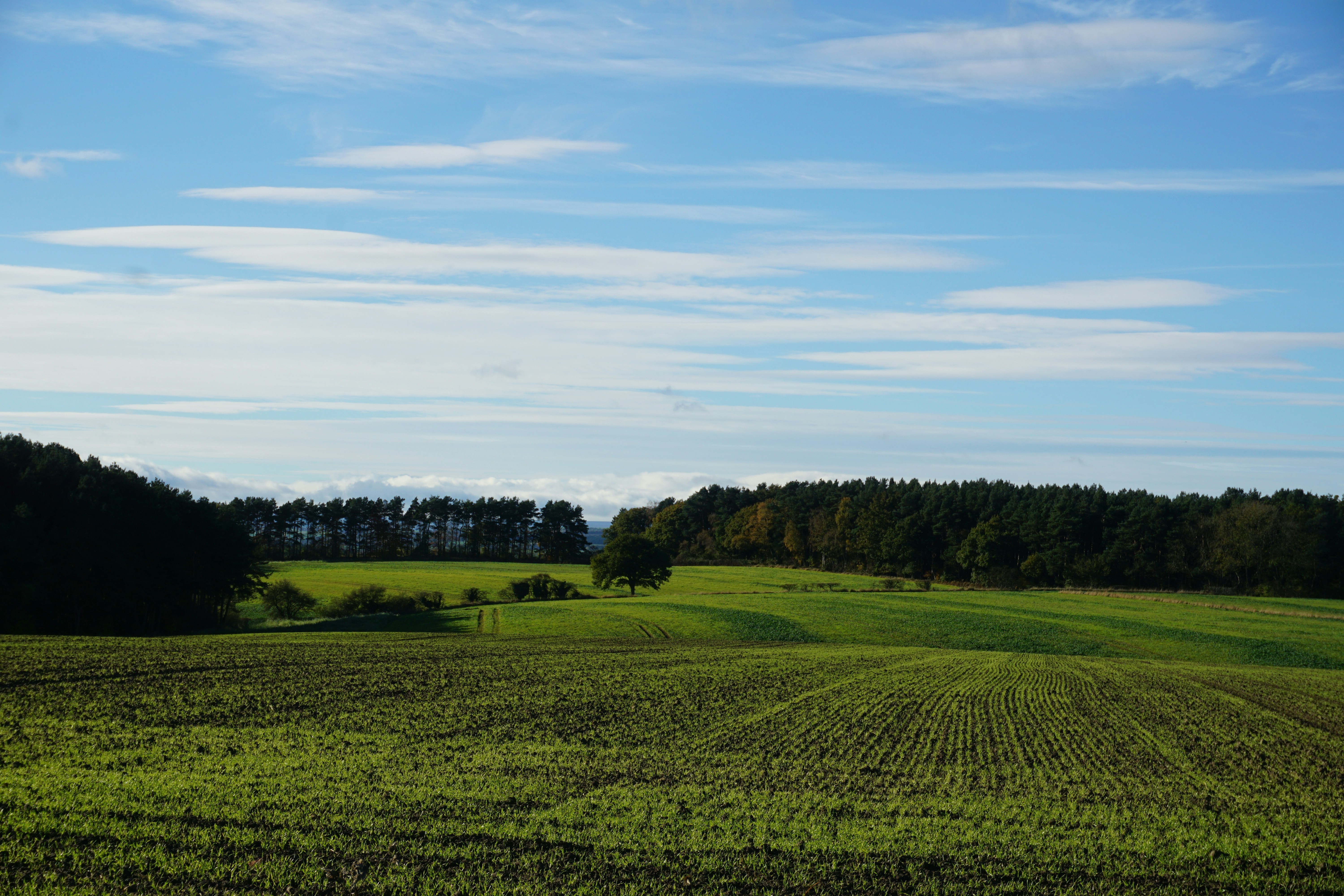What Is What3Words?
With 57 trillion 3 x 3 m squares and a unique 3-word address for every square, the clever What3words system has mapped the whole planet. This makes it possible to convey extremely exact locations without the need for codes, coordinates, or detailed descriptions by utilising only basic words. What3words is a priceless tool for campers, hikers, and outdoor enthusiasts that addresses a number of important problems with navigation, on-trail collaboration, and location sharing. You can coordinate a precise meeting location along far paths, guide pals to a secret bothy deep within a forest, and even assist emergency personnel in locating your tent in an emergency with just three common words.
The basics of this location system are wonderfully simple. The team divided up the entire globe into tiny 3-meter squares. They then assigned each square a combination of 3 words, picked from a list of 40,000 everyday vocabulary terms. For example, the specific 3m x 3m patch at the main gate of Buckingham Palace has been allocated the address 'this.next.most'. This produces over 64 trillion possible combinations, meaning every possible location on land or water can have its unique 3-word address. It’s almost like a latitude and longitude substitute, but using vocabulary we already recognise rather than complex strings of numbers and symbols. To use what3words, all you need is access to the free app or the online map portal. Enter any 3-word address and it will instantly show you that precise location on the map. You can also click any point on the map interface to reveal the 3-word address assigned to that spot. The app works completely offline as well, using pre-cached maps and address data so remote areas without a signal can still be navigated.
Why Is It Useful for Campers/Hikers
What3words provides 3 stand-out location benefits not offered by any other navigation app or geocoding system. Firstly, it enables incredibly simple communication of exact meeting points in rural areas lacking formal addresses or even landmarks. For example, you can pick a spot in the centre of an open field or forest clearing, identify its 3-word wha3words address either offline or using a single point of signal, then easily lead friends to converge there later even when totally offline and deep in the wilderness. It also allows navigation to extraordinarily precise spots in remote areas. Rather than trying to direct people to a vaguely defined point using multiple waymarkers and guesses at distance, a single unique 3-word address can pinpoint any 3m x 3m position to hike to flawlessly. And finally, in emergencies, the app enables rescuers to locate a hiker in distress even in dense woodlands or heavy fog when visibility is down to just meters. No need to estimate proximity to the nearest landmark - a 3-word location leads helicopters, drones and ground teams straight to the exact scene.
How to Use What3Words - The Basics
What3words is incredibly simple to use, which is a key part of its brilliance. To find an address, simply open the app or online map, enter the 3 words and press search. The location will be shown on the map along with handy functions like navigation and the ability to share the location. To find the 3-word address for any location, navigate to the precise spot on the map and the 3-word address will be displayed. This address can then be shared with friends so they can easily meet you there. The app automatically detects language so will provide the 3-word combo in the preferred language. Addresses only work in one language though. The free what3words app is available for both iOS and Android. Alternatively, the online map offers the same functionality through a browser. The app also offers offline functionality for areas without signal, storing the what3words database and maps directly on the device. The app only requires a small amount of storage space too.
Once you have selected a location, the app and online map offer various useful features without needing to navigate away. You can get walking, driving and public transport directions to the 3-word address via an integrated navigation system. The app uses this feature alongside the phone's GPS to help navigate you precisely to any location if getting directions. What3words has also focused on integration with other products and services. Many camping and hiking apps utilise the system for coordinate sharing or navigation. Apps like OS Maps, ViewRanger, Komoot, National Geographic and AllTrails all integrate directly. Some automotive brands have also incorporated the system into vehicles with built-in navigation systems. Sharing locations is very simple too. Each 3-word address has a unique webpage on the what3words website. So you can share locations via links that open the map on that spot. The app also allows locations to be shared with other Whats3Words users, or via other apps on your phone. Integrations with messaging apps provide another seamless way to share locations.
The Precision of 3x3m Squares
What3words has mapped the world at a resolution never before seen in location technology. The grid divides the entire globe into 57 trillion 3m by 3m squares. Each square is assigned a unique 3-word address, providing precision far greater than GPS coordinates or postcodes. This gives unrivalled accuracy in pinpointing and communicating exact locations.
The Ingenious 3-Word Allocation Algorithm
The what3words algorithm is ingenious in how it assigns word combinations to each 3x3m location square. It utilises a vocabulary of 40,000 words categorised by frequency, length, composition and other metrics. Words are combined in trinities and checked against parameters so they remain distinct from other nearby addresses, are easy to say and spell and have no common word blends. This approach means every square is allocated a random but memorable 3-word address. Addresses are also permanent once assigned to a location. So ‘this.next.most’ will always refer exclusively to the 3x3m patch at the main gate of Buckingham Palace. The result is the ability to communicate positions more precisely than ever before. For example, move just a few feet from Buckingham Palace’s entrance to the end of the driveway and you enter the square with the address ‘guard.bent.fold’. Two unique 3-word combinations separated by just a couple of strides. No other navigation system gets even remotely close to this accuracy.
Trillions of Address Combinations
The key to this flawless accuracy lies in the mind-bending number of variations possible when combining 3 words out of 40,000 choices. 64 trillion unique combinations ensure what3words can allocate completely distinctive 3-word addresses with zero risk of overlapping. Other geocoding systems like GPS coordinates provide accuracy only to a few meters at best. Postcodes cover entire streets or sides of buildings - neither options allow people to communicate positions down to discrete 3-meter squares. What3words’ combination of simple vocabulary with over 64 trillion permutation opportunities is what unlocks such precision.
Ability to Evidence Hyper-Accuracy
The easiest way to evidence what3words’ incredible precision is to test it for yourself. Open the app and navigate to any location at the smallest increment possible on your device's map. Start outside your front door, then shift a couple of feet to stand by the mailbox. Then shuffle over a few inches towards the edge of the driveway. At each tiny movement, you will see your location change to a different 3-meter square with a completely new 3-word address. The perfect randomness yet massive scope of available addresses means minute movements flow seamlessly into fresh location squares with alternative identifiers. Now try the same process of tiny shuffles when using regular mapping apps or GPS. You’ll find position updates only occur every few feet at best rather than a few inches. No system offers close to the accuracy of tracking changes down to 3x3 meter increments across the entire planet.
How Addresses Translate Across Languages
Because what3words app and map interfaces are now available in over 45 languages, you may be wondering whether the 3-word addresses are standardised across tongues or get translated too. The answer is they remain distinct rather than converting over. What3words has been careful to enable cross-language identification though. So for example, while the 3 word home location for Buckingham Palace is ‘this.next.most’ in English, the Russian equivalent would be ‘этот.следующий.большинство’. But despite having different vocabularies, both examples pinpoint the same 3x3m location square at Buckingham Palace’s entrance. So multilingual groups can navigate there together with ease. Equally emergency services would recognise either option referred to the identical incident site needing attendance. So in summary, what3words 3 word addresses are unique rather than translated across the 45+ interface languages. But the system does clearly identify different tongues point at the very same fixed locations. This subtle but smart distinction aids global universality while retaining linguistic individuality.
Key App Integrations Unlocking What3Words' Benefits
What3words is now integrated into a wide selection of outdoor recreation, travel and navigation apps. For hikers, campers and explorers, these key partnerships unlock huge benefits when trying to navigate and share locations in remote off-grid regions.
1. ViewRanger - Seamless Offline Navigation
ViewRanger is an extremely popular outdoor app that allows digital mapping access even when offline. Over 10 million people use it for hiking, mountain biking, ski touring and multi-day expeditions across over 150 countries. Recognising what3words' power for location sharing in areas lacking connectivity, ViewRanger integrated it into their platform back in 2018. This means ViewRanger users can now utilise 3-word addresses for navigation even when offline and out of signal. By harnessing what3words, ViewRanger provides offline access to its excellent mapping capabilities while benefiting from pinpoint coordination abilities.
The Integration Benefits Include:
Logging precise waypoints and route markers with unique 3-word addresses
Sharing saved routes and markers via the linked what3words map
Navigation to any trail location using 3 word addresses even without a phone signal
Directing groups to meet at exact off-grid spots using shared 3-word locations
2. Komoot - Planning Routes & Sharing Waypoints
Komoot is a dedicated trip-planning app for hiking, biking and outdoor leisure routes used by over 15 million people. With detailed maps and crowdsourced trail info, it is hugely popular across Europe and North America. Since 2021, Komoot has integrated what3words so its community can share tips and waypoints using 3-word addresses. Routes can also be overlaid onto the map to showcase trails and recommendations. By harnessing what3words' unique address system, Komoot provides next-level abilities for planning routes as well as sharing them.
The Integration Enables:
Navigation in remote areas using 3 word addresses from Komoot routes
Sharing very specific waypoints and path tips via memorable 3-word locations
Direct coordination between groups out on the trail using shared what3word spots
3. National Geographic - Pinpointing Obscure Gems
National Geographic built an offline mobile map app aimed at travellers seeking new destinations. While focused on discovery, recognising locations is still vital. So since 2020, Nat Geo's iconic maps have integrated what3words to pinpoint noteworthy sights and hidden gems. By adopting what3words into their famous mapping capabilities, National Geographic has enhanced discovering and navigating to those hard-to-find travel sights.
The Integration Allows:
Explorers checking out Nat Geo's points of interest can navigate to them easily with 3 word addresses rather than approximations
Sharing obscure great views, artefacts and destinations is made simple via unique 3-word locations
Enables National Geographic to highlight thousands more out-of-the-way places of interest globally
4. AllTrails - Tagging Trail Sections & Waypoints
AllTrails is a digital platform used by over 30 million hikers, trail runners and mountain bikers to discover new routes worldwide. Recognising what3words' value for outdoor recreation, AllTrails launched integration in late 2022. By partnering with what3words, AllTrails has enormously boosted the capabilities for people to coordinate accurately out on even the most remote trails.
The Integration Allows:
Sections along the hundreds of thousands of listed trails can now be identified by 3-word addresses
Precise waypoints and path junctions can be tagged with unique what3word locations
Trail users can share and meet up at exact spots along routes via simple 3-word addresses
5. OS Maps - Navigation & Sharing for British Explorers
OS Maps is the definitive mapping and navigation app tailored for Great Britain and Ireland. Used by millions annually it offers unrivalled hiking and outdoor functionality for the region. Recognising what3words' ability to precisely identify locations across the diverse British countryside, OS Maps integrated it into their platform. Overall this integration makes the already powerful OS Maps platform even more invaluable for British ramblers and adventurers. The ability to set and share locations in even the most rural and rugged parts of the countryside takes coordination abilities to the cutting edge. OS Maps users can now leverage world-leading cartography together with next-generation geotagging. So whether you want to rendezvous at a hidden forest bothy with friends or ensure mountain rescue can find your camp spot in low visibility, what3words plus OS Maps is the ultimate mix.
The Integration Features:
Enables dropping pinpoint marker pins on the map identified by unique 3-word addresses
Instant one-click sharing of these markers with other OS Maps users via chat apps, email, etc
Support for navigation directly to any tagged what3words location even in remote areas
Importing and exporting full routes as shapefiles annotated with 3-word waypoints
Rising Popularity Across Hospitality & Tourism in Britain
What3words is firmly establishing itself across Britain, adopted widely by hospitality businesses, venues, attractions and services facilitating travel and tourism. Its ability to allocate each possible place a fixed 3-word address creates a common language for identifying and sharing locations. For hotels, restaurants, parks, events spaces and tourist sites across Britain, what3words has become an indispensable piece of technology unlocking major benefits.
Enabling Precise Directions to Rural Hotels & Venues
Historic country house hotels and remote wedding venues use the app to guide guests to exactly the right entrance gate without getting lost down muddy tracks and winding laneways. By providing a unique 3-word address for the exact parking lot or reception door, properties hidden off the beaten track can still welcome visitors flawlessly rather than risk losing business. What3words is also transforming room service and guest greet/meet abilities. Hotels can allocate every room its 3-word address to pinpoint orders and internal meetups precisely.
Boosting Takeaway Delivery for Cafes & Restaurants
Seaside cafes, roadside farm shops and vineyards sprinkle what3words addresses across menus, signage and delivery instructions so takeaway drivers locate them easily. Rather than risk couriers ending up in the wrong place due to vaguely defined locations, each entrance or designated pickup spot can now have its unmistakable 3-word address.
Managing Emergency Incidents at Tourist Attractions & Resorts
Holiday parks, adventure activity centres and national park sites employ what3words so rescue teams can quickly reach injured visitors even deep into dense woodland or massive campuses. Rather than rely on visibility or landmarks, a simple 3-word location relays precisely where critical assistance is needed regardless of conditions. Some attractions even print unique evacuation point addresses by emergency exits and hazards.
Coordinating Festivals, Events & Venues
Music festivals, sporting events and conferences held at massive arena or track venues harness what3words on a grand scale. Wristbands, signs and apps display 3 word addresses helping separated groups reunite effortlessly even on huge grounds. By sharing a unique 9x9 foot space, friends can pre-agree to meet there. What was once like finding a needle in a haystack is now just a what3words search away. Similarly, stadiums often allocate specific stand sections, bars and facilities with distinct 3-word addresses.
What3Words at National Trust Sites
Britain's National Trust cares for hundreds of heritage sites from stately homes to gardens to castles with vast grounds and obscure parts. Recognising what3words' power to guide visitors easily, it became one of the first UK heritage bodies to adopt the system. What3words signage at National Trust locations helps tourists locate lesser-known grottos, follies and hidden gems on even the largest estates. Where previously only rangers knew the way, now anyone can navigate there directly themselves just using 3 words. Equally for staff managing emergencies or coordinating contractor tasks across remote parklands, what3words delivers. Every gatehouse, tidal island, pagoda folly and more can have its address rather than rely on sightlines. Its rollout has been so successful, that the National Trust has made what3words addresses and on-site mapping available on its website for all 500+ properties. From obscure caverns to tiny islands, nowhere is left off the map thanks to easily sharable 3-word locations.
Related articles

Let us know you agree to cookies
We use marketing, analytical and functional cookies as well as similar technologies to give you the best experience. Third parties, including social media platforms, often place tracking cookies on our site to show you personalised adverts outside of our website.
We store your cookie preferences for two years and you can edit your preferences via ‘manage cookies’ or through the cookie policy at the bottom of every page. For more information, please see our cookie policy.

